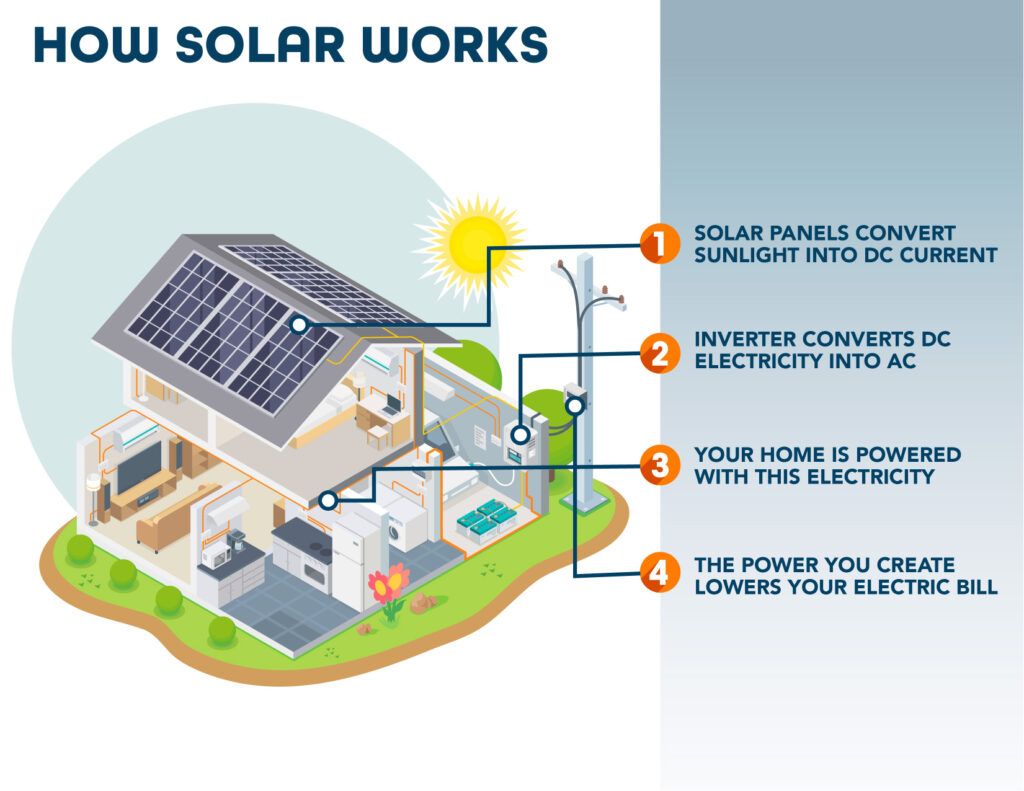Beginner’s Guide to Solar Panels for Off-Grid Homes

Are you considering moving off the grid and exploring the world of solar power? Solar photovoltaic (PV) systems offer a fantastic solution for generating electricity in off-grid homes, providing both protection and convenience. As someone who has powered their off-grid home with solar for the past 9 years and recently upgraded to the Tesla 2 Powerwall system, I can share valuable insights on how solar panels can enhance your off-grid lifestyle.
What Are Solar Panels?
Solar panels capture sunlight and convert it into electricity. This technology allows you to power essential appliances, water systems, and other home utilities even when you’re not connected to the grid. By harnessing the sun’s energy, you can enjoy a sustainable and reliable power source that supports your daily activities.
How Solar Panels Work
Solar panels are composed of silicon wafers that absorb sunlight and generate direct current (DC) electricity. This DC power is then stored in batteries for later use. To make the electricity usable for your home, it’s converted to alternating current (AC) by an inverter. This process ensures that your off-grid home can operate just like a conventional grid-connected one.
Cost of Solar Panels
The cost of solar panels has dramatically decreased over the years:
- 2010: ~$2.50 per watt
- 2017: ~$0.38 per watt
- 2018: Prices saw a temporary increase due to tariffs but have resumed a downward trend.
- 2024: Prices can vary, but the number of choices has increased.
Swanson’s Law suggests that prices decrease by approximately 10% annually with increased shipments. If you’re budgeting for solar when building an off-grid home, consider checking existing systems for potential upgrade costs to maximize your investment.
Where to Install Solar Panels
To maximize efficiency, solar panels should face south to capture the most sunlight. Key factors to consider include:
- Clear access to the sun: Ensure there are no obstructions like trees or buildings.
- Space around the home: Allow enough room for the panels and maintenance.
- Risk of damage: Consider potential impacts from animals or severe weather.
- Snow and sun tracking needs: Plan for systems that handle snow and adjust to the sun’s path.
Different Ways to Install Solar Panels
- Fixed Ground Mounting:
- Easy installation and maintenance.
- Potential risks include damage from activities or vandalism.
- Fixed Roof Mounting:
- Roof Mounted 1: Easier access but requires waterproofing and may face high wind risks.
- Roof Mounted 2: Uses ballast like concrete blocks to secure panels.
- Roof Mounted 3: Ideal for metal roofs, reducing the need for drilling.
- Wall Mounting:
- Utilizes south-facing walls.
- Generally, less adjustable and may be stationary.
- Tracked Mounting:
- Increases efficiency by 25%–40%.
- Higher cost but can significantly boost performance.
- Top of Pole Mounts:
- Allows seasonal tilt adjustments.
- Can resemble trackers but remains stationary.
Total Equipment Required (Including Optional)
- Solar Panels: For a basic setup, consider nine 250-watt panels.
- Inverter: Converts DC to AC; aim for near 100% efficiency.
- Charge Controller: Manages current to batteries and optimizes system efficiency.
- Battery Bank: Stores power for use when sunlight is not available.
- Backup Generator: Provides power during extended cloudy periods; can be automatic.
- Transfer Switch: Switches between power sources.
- AC Load Center: Manages AC voltage and current.
- DC Load Center: Manages DC voltage and current.
- Automatic Start: Activates the generator based on battery and load conditions.
Where to Buy Solar Panels
You can purchase solar panels from local hardware stores like Lowe’s or Home Depot or explore online options. For full systems, search for reputable providers and check reviews to find the best options. Consider panels with 250 to 400 watts for cost efficiency.
Conclusion
Before investing in solar panels, conduct thorough research and consult with off-grid homeowners and experts. Solar panels are a valuable addition to any off-grid home, providing convenience and protection while supporting a sustainable lifestyle.
